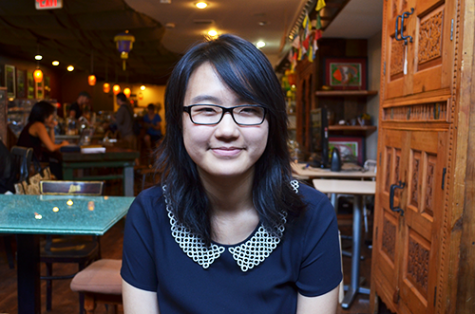Can math help you make friends?
Students are playing volleyball together in last year’s student activitiy fair.
Over the next weeks, students from all over the world will descend upon the Case Western Reserve University campus. While we possess diverse worldviews, experiences and cultures, there are a few things that we all have in common. Among them is being a scared first-year student worried about making friends in college.
If this was a normal article, this is where I would tell all scared first-year students that their fear is totally natural. I would tell them that everyone is scared of not making friends and that everyone in the end finds tons of deep and lasting relationships here. However this is not your usual “how to survive in college” article—although The Observer does have that in this issue if that is more your cup of tea. So instead of preaching to you about friendship and acceptance, I am going to show all you scared first-year students that you can and will make friends here, using another thing that unites CWRU: our nerdy love of math.
In the spirit of providing an illustrative example, let’s think of friend-making like flipping a coin. Every time you meet someone, you flip the imaginary coin of making a friend. The head of the coin represents that you two become friends and the tail is that you don’t. So in this case it’s clear that the “probability” of you becoming friends with a person you meet is one half. If we extend this idea a little bit, we see that it’s silly to think that the probability that someone will be your friend will always be a perfect one-half. You could be incredibly gregarious and make friends with far more than half of the people you meet. Or perhaps you could be a more reserved person for whom friend making does not come as naturally. With this in mind, one could imagine flipping a biased coin that comes up head with some probability—”p”—and tails with some probability that is 1-“p”. So, during these first few weeks of school when you are meeting new people, you can imagine that you flip the friendship coin “n” times where “n” is the number of people whom you meet.
In probability theory, we call the value for the number of friends you have after flipping the “friendship coin” “n” times a binomially distributed random variable. Using this we can easily look up a formula for the “expected” or average number of friends you will have, which turns out to be
“n” X “p”.
Examining this further, we see that some interesting conclusions can be drawn from this simple formula. There are only two ways to raise your expected number of friends. You can increase “p”, the probability that someone will be your friend, but “become more personable” isn’t the greatest advice to give to someone worried about making friends. Conversely, you can increase “n”, the number of people you meet, which, while often a source of anxiety, is something that everyone has direct control of.
For some, this may come as a relief while for others it may come with some discomfort. On the one hand, this clearly implies that the sure-fire way to make friends is to go and talk to more people. However it also reflects the inconvenient fact that to make friends you have to put yourself out there, which can be scary. But if you have trust in math and if you get out there and talk to people, rest assured that you will find friends at CWRU. Worse comes to worst, if trusting math isn’t your style, you can always remember that if an awkward math major like me found friends at CWRU, then there is hope for you.

Jessica Yang is a second-year Biochemistry and Psychology double major student. In her spare time, she enjoys watching movies, reading books and fan-girling...


